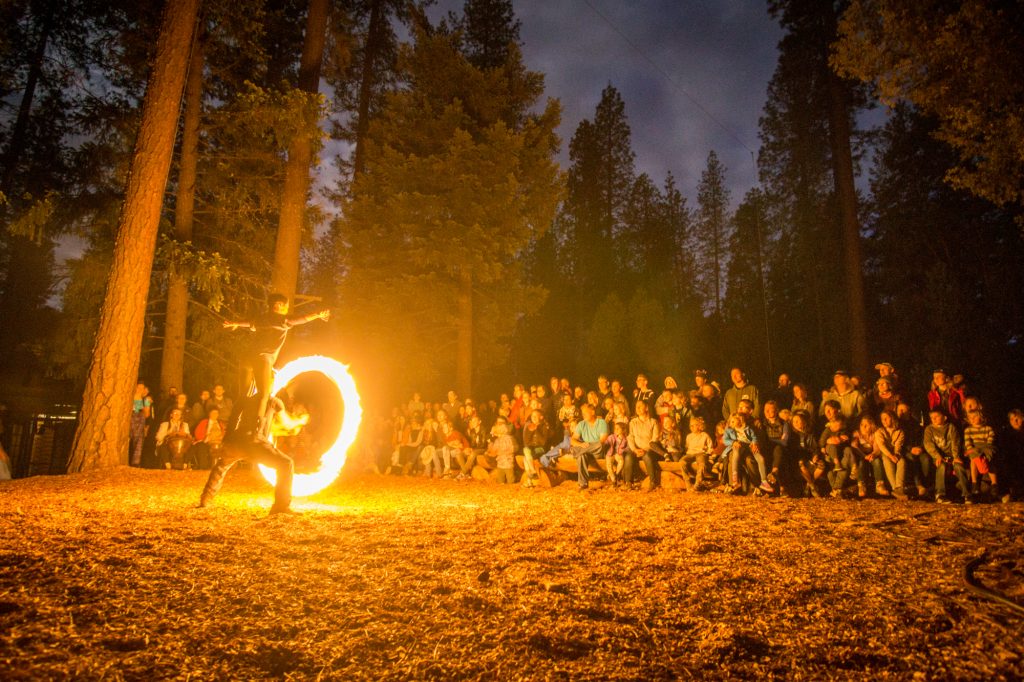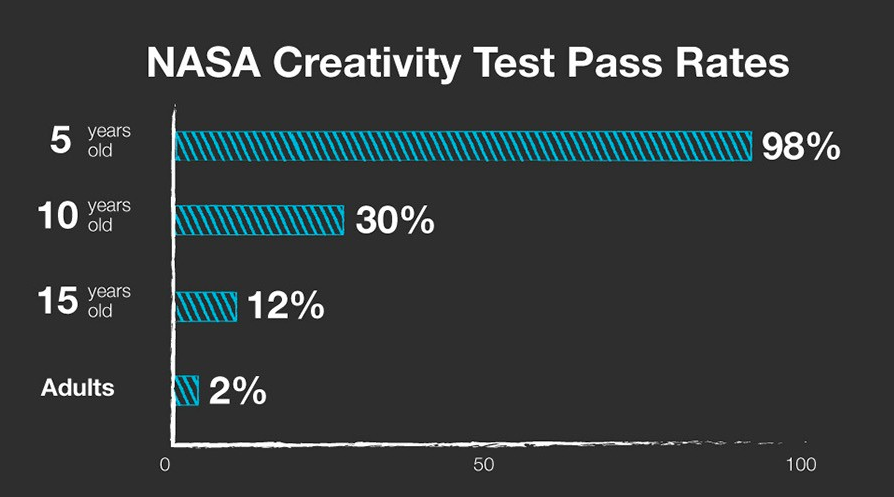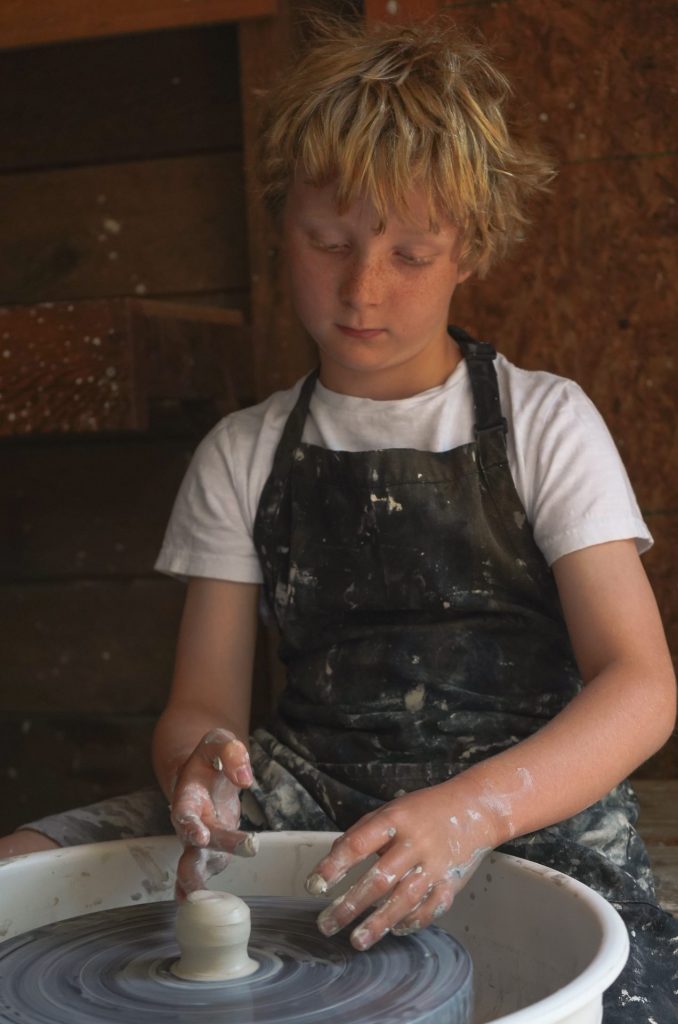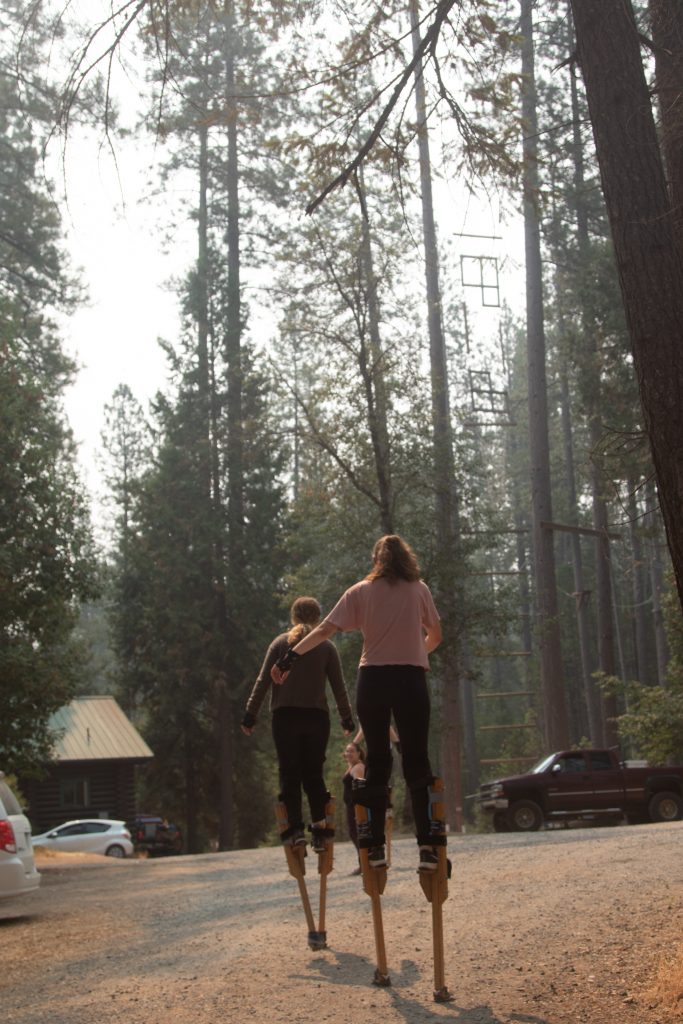“Imagination is more important than knowledge. Knowledge is limited. Imagination encircles the world.”
“The true sign of intelligence is not knowledge but imagination.”
– Quotes from Albert Einstein
This page highlights the importance of Creativity and Expression and how it is a largely under-served aspect of development in education.
On these additional pages, we share in detail how Camp Augusta cultivates these virtues, and provide Resources for further exploration, (links, books, stats, and more) including links to cited research.
Most summer camps are “fun.” And many summer camps end there. Some summer camps are formative; a child arrives, and after only a week or two, they emerge as an even better version of themselves: more resilient, confident, and with life-long friends.
Augusta, however, leaps beyond even these high standards in summer camps:
Augustan campers are greeted by the most extensively trained staff in the country. We are an ethos-driven community who work sincerely and care deeply about the role of mentorship and alternative education in creating a better world.
When campers spend a session at Camp Augusta, they are given a re-conception of human connection, health, and emotional intelligence. The depth and intention of an Augustan summer camp experience simply can’t be understated.
Among the many virtues that we foster are Creativity and Expression. This page will highlight some of the ways that Augusta shines brightly in this realm. The details may surprise you.

Creativity: The use of the imagination to form original ideas that have value
“What can we do with this?” … “What if…” …
“I’ve never done this before!” … “Wanna try something?”
Expression: The process of making known one’s thoughts or feelings
“Let’s try this!” … “Can I try?” … “Tell me about…” … “Can I wear this?” … “Watch this!” … “Today I tried…”
Creativity is generating new ideas, and Expression is our capacity and tendency to bring those to life.
So, how are these showing up in our lives?
The Landscape of Creativity and Expression
Despite the value that the world receives from creativity, innovation, and expression – and despite the spice it’s added to your life – the flames of these concepts are dwindling in the United States. A Harvard Business Review article states that despite 30% of the workforce and 50% of all United States income coming from “the creative sector”, creativity is significantly declining. (HRB 2004) “Freedom of expression allowed new technologies and cultural forms to flourish—from biotechnology to alternative rock.” Today, our schools and cultures are less creatively focused, with creativity scores & results trending downward since the 1990s. (KH Kim 2011, + 1 – 2 – 3 – 4)

And on a more personal level, a longitudinal test of creative potential done by NASA found that of 1,600 4- and 5-year-olds, 98 percent scored at “creative genius” level. Five years later, only 30 percent of the same group of children scored at the same level, and again, five years later, only 12 percent. When the same test was administered to adults, it was found that only two percent scored at this genius level.
According to the study, our creativity is drained by our education. As we learn to excel at convergent thinking–or the ability to focus and hone our thoughts–we squash our instinct for divergent, or generative, thought. Ursula Leguin sums it up well:
“The creative adult is the child who survived.”
This finding echoes Ken Robinson’s famous TED talk “Do Schools Kill Creativity?,” in which he explores how creativity is regarded and affected in our education systems. Considerations he poses:
- Children starting school this year will be retiring 65 years from now – about 2080. No one has a clue what the world will look like in that time and yet we are meant to be educating for it. The unpredictability is extraordinary.
- Schools are built on and reinforce a hierarchy of subjects. Math and language are at top, then the humanities, then art always at the bottom. And yet, arts teach a diversity of interactivity with the world. Ken adds: “creativity… more often than not comes about through the interaction of different disciplinary ways of seeing things.”
- Kids naturally will take chances; they’re not frightened of being wrong. But school and many businesses degrade that courage. Ken says: “we’re running national education systems where mistakes are the worst things you can make. And the result is that we are educating people out of their creative capacities.”
In the end, a sundry of statistics are pointing to two main points:
1. Creativity and expression are vastly important.
2. They diminish in most of us at school, and are systemically and culturally undervalued.
So where & how can we keep it? How can we keep our child-like creativity?
Summer camp plays a critical role in the upbringing of our children – cultivating skills and character traits that are lost in schools. At Augusta, we believe education is to prepare kids to flourish in life – socially, emotionally, mentally, and physically. To spur meaning and joy. And not just for the year they graduate, but for a lifetime.
How can we Cultivate Creativity and Expression?
Signs of Creativity
This begs the question: what does creativity “look like in the world?” A meta-analysis of creativity tests and the Big 5 personality tests (Feist, 1998), and a recent re-exploration of this in KH Kim’s 2016 book The Creativity Challenge offer many clues. Here are 8, which can sometimes be “misinterpreted as rebelliousness or impracticality,” but are healthily encouraged at camps like Augusta.

- Big picture thinking: Creative people think abstractly with optimism and curiosity – especially towards ideas that may seem dreamy or unrealistic.
- Spontaneity: Creative people hold flexibility to act fast on new opportunities, with an open-mindedness and playful perspective.
- Playful: Creative people exude a light-hearted drive to explore the world in new and unique ways.
- Resilient: Creative people pick themselves up after failure, refocus, and try again.
- Autonomous: Creative people strive for independence in thoughts and actions with intrinsic motivation.
- Defiant: Creative people generally reject norms and ‘authority’ in pursuit of their goals and integrity. They think outside the boxes of culture.
- Risk-Taking: Creative people trust the innate security in their being that encourages continued trying.
- Daydreaming: Creative people envision new perspectives and solutions best in a context of peace and freedom of mind.
As explored before, these are too-seldom encouraged in school environments. In fact, the opposite is true; they often come with punishments. It’s time to take creativity back.
Reclaiming Creativity
Furthermore, just as creativity can be lost, it can also be ‘Reclaimed’ (Rose et al, 1984)(Hsen-Hsing, 2009). A smorgasbord of resources offer ways of cultivating creativity in young people – of ‘teaching’ it (or, maybe more accurately, not ‘unteaching’ it). These cultural and institutional ways include:
- Offer Creatives the Resources they Need – With time and freedom, anyone will create
- Foster Diversity – Diversity challenges our pre-existing thought patterns with new ones
- Encourage Mentorship – Mentors create a context of support and independent development
- Embracing Chaos – Chaos can be a fuel or the wall to creativity; it depends on resistance
- Reactivating Wonder – Choosing curiosity in all the moments
- Igniting Creativity with Desire – Connecting to passions and internal motivations
- Create a compassionate, accepting environment – Learner need to trust they can fail safely
- Be present with students’ ideas – Building a collaborative relationship
- Use creative learning models, and methods – Diverse activities and learning methods
- Channel the creativity impulses behind “misbehavior” – What is it pointing to?
- Support intrinsic motivation – Intrinsic motivation fuels creativity
- Make it clear that creativity requires effort – to imagine, fail, and re-imagine
- Hands-On Field Work – Connecting to the outcome and learning cycle

We have integrated all of the ideas above, and much more research and intentionality, into creating an environment that naturally fosters creativity and expression in all Augustans. So, what does this environment look like?
CREATIVE QUIZ-FLASH! What do you See?
Test out your own divergent thinking in this Torrence-style creativity test: Augusta Style. In one minute, how many unique and realistic/applicable uses can you make for these objects? Then hover or tap to see what we’ve used them for at camp.
A Yellow Dodgeball…
A Woodchip…
A Trashcan…
Creativity and Expression at Augusta
Augusta is unique among summer camps in its attentive cultivation of Creativity and Expression.
On the following page, we’ll highlight 3 core ways in which Augusta does this: a creative structure, a diverse environment, and an intentional culture.
Additionally, we’ve curated some resources from around the web that cover this topic: Videos, links, books, research, and more:


